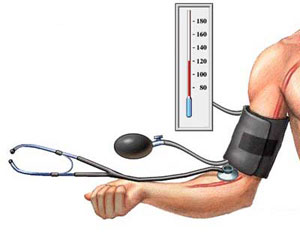Lower blood pressure… how low is low enough? Surprising new findings show that lower is not always better and that the emphasis on achieving ever-lower blood pressure is doing us more harm than good.
Over many decades of medical practice hypertension was defined as blood pressure above 140 points systolic over 90 points diastolic. But some years ago, particularly in America, the goal posts shifted. Suddenly, and without much debate, the limit for normal blood pressure was lowered to 130 over 80. Many medical professionals considered any pressure above these figures to be high blood pressure while others labeled the range from 130/80 to 140/90 “pre-hypertension”.
Virtually overnight, millions more people were diagnosed with hypertension and were walking away from medical exams with prescriptions they wouldn’t have had only a short time earlier. Those with mere “pre-hypertension” weren’t neglected as new drugs were quickly developed for this “dangerous” new condition.

While not everyone applied such strict diagnostic criteria, the general direction was undeniably towards ever-lower blood pressure targets. In other words: the lower the better. Even aging people, whose blood pressure tends to naturally increase over time, were urged to achieve unrealistic blood pressure of 120 over 70 or less. Dr. Oz, Oprah Winfrey’s celebrity physician, proclaimed that one of the keys to eternal health and youth was blood pressure of 115 over 75.
But now a major new study has doctors re-evaluating their policies. It reveals that there are no health benefits to be had from blood pressure targets below 140 over 90. In fact, excessively low blood pressure may even increase deaths from both heart disease and adverse drug reactions.
The analysis by the Cochrane Review covering studies of nearly 30,000 people showed that the lower blood pressure limits were not associated with further reductions in overall mortality or incidence of stroke, heart failure or kidney disease. The findings also apply to high-risk groups such as those with diabetes, cardiovascular disease and kidney impairment.
This is not just a matter of overzealous doctors erring on the side of caution; unrealistic blood pressure targets do real harm. The greatest (but not only) damage is done through over-medicating. It takes big increases in dosage and/or numbers of drugs to close the gap between 140/90 and 130/80.
 The heavy costs
of over-medicating
are paid both financially
and in health outcomes. Dr. Argueda, the author of the Cochrane study,
states
that adverse drug reactions “could negate any potential
benefit associated with
any achieved lower blood pressure”. It could even increase
the number of
strokes and heart attacks if blood pressure gets too low.
The heavy costs
of over-medicating
are paid both financially
and in health outcomes. Dr. Argueda, the author of the Cochrane study,
states
that adverse drug reactions “could negate any potential
benefit associated with
any achieved lower blood pressure”. It could even increase
the number of
strokes and heart attacks if blood pressure gets too low.
Adverse drug reactions and side effects are serious but they are not the only damage resulting from overzealous blood pressure interventions. Untold damage is done by needlessly frightening millions of healthy people and making them patients. “A fit and healthy older person can return home from an annual health check as a patient, scared and no longer comfortably aging,” says Michael Oliver, Professor Emeritus of cardiology at the University of Edinburgh.
Of course this problem is not restricted to the elderly. Internet health forums reveal people of all ages desperate to reduce their blood pressure to “normal” readings below 120/70 and worried sick over every tick in the wrong direction.
Finally, the lessons taught by the Cochrane Review need be applied in other areas of our health. Ancient health beliefs may have been way off in technical matters but they got many basics right: health is a matter of balance, not absolutes. More, higher and lower are not always better.
Click here to learn more about a simple and enjoyable natural way to lower blood pressure and to obtain many other health benefits.